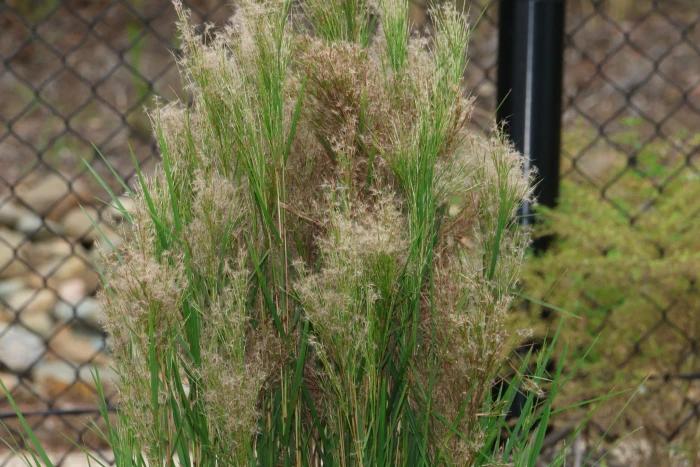Little Bluestem
(Schizachyrium microstachyum)
Little Bluestem (Schizachyrium microstachyum)
/
/

© Greg Tasney
CC BY-SA 4.0
Image By:
© Greg Tasney
Recorded By:
Copyright:
CC BY-SA 4.0
Copyright Notice:
Photo by: © Greg Tasney | License Type: CC BY-SA 4.0 | License URL: http://creativecommons.org/licenses/by-sa/4.0/ | Uploader: gregtasney | Publisher: iNaturalist |

























Estimated Native Range
Climate Requirements for Arlington, Virginia
| This Plant | Your Site | Plant Suitability for Your Location | ||
|---|---|---|---|---|
| • Precipitation | 7" - 163" | 41" | Aquatic | Aquatic |
| • High Temp. | 63°F - 99°F | 88°F | Your summer temperatures are normal for this plant. | Excellent |
| • Low Temp. | 22°F - 73°F | 25°F | Your winter temperatures are normal for this plant | Excellent |
This plant should grow well at your location with about N inches per year (Y minutes per month) of irrigation.
Summary
Schizachyrium microstachyum, commonly known as Little Bluestem or Dwarf Beardgrass, is a perennial grass native to prairies, savannas, and open woodlands throughout Mexico to South America. It typically grows at a moderate rate to a height of 1.5-3 feet (0.46-0.9 meters) and a width of 1-2 feet (0.3-0.6 meters). This grass features fine-textured foliage that transitions from blue-green in summer to a striking coppery-orange in the fall, providing year-round visual interest. The inflorescences are fluffy and purplish to bronze, appearing in late summer and persisting into fall, adding a soft texture to the landscape.
Little Bluestem is valued for its drought tolerance and its ability to thrive in poor soils, making it an excellent choice for low-maintenance naturalistic plantings and restoration projects. It is often used in prairie restorations, as a border plant, or in mass plantings for erosion control. This grass is also a vital component of the North American tallgrass prairie ecosystem, supporting a variety of wildlife. It requires full sun to maintain its best form and color and prefers well-drained soils, tolerating a range from clay to sandy loam. While generally pest and disease-free, it can suffer from rust in humid conditions. Little Bluestem is not known for aggressive roots or significant problems in the garden, but it can self-seed and become somewhat invasive if not managed.CC BY-SA 4.0
Little Bluestem is valued for its drought tolerance and its ability to thrive in poor soils, making it an excellent choice for low-maintenance naturalistic plantings and restoration projects. It is often used in prairie restorations, as a border plant, or in mass plantings for erosion control. This grass is also a vital component of the North American tallgrass prairie ecosystem, supporting a variety of wildlife. It requires full sun to maintain its best form and color and prefers well-drained soils, tolerating a range from clay to sandy loam. While generally pest and disease-free, it can suffer from rust in humid conditions. Little Bluestem is not known for aggressive roots or significant problems in the garden, but it can self-seed and become somewhat invasive if not managed.CC BY-SA 4.0
Plant Description
- Plant Type: Grass
- Height: 1.5-3 feet
- Width: 1-2 feet
- Growth Rate: Moderate
- Flower Color: N/A
- Flowering Season: Summer, Fall
- Leaf Retention: Deciduous
Growth Requirements
- Sun: Full Sun, Part Shade
- Water: Medium, High
- Drainage: Fast, Medium
Common Uses
Bird Garden, Drought Tolerant, Erosion Control, Low Maintenance
Natural Habitat
Native to prairies, savannas, and open woodlands throughout Mexico to South America
Other Names
Common Names: Dwarf Beardgrass , Broom Beardgrass
Scientific Names: Schizachyrium microstachyum , Andropogon benthamianus , Andropogon condensatus var. paniculatus , Andropogon lechleri , Andropogon lechleri , Andropogon lhotskyi , Andropogon microstachyus , Andropogon microstachyus , Andropogon paniculatus , Andropogon plumiger
GBIF Accepted Name: Schizachyrium microstachyum